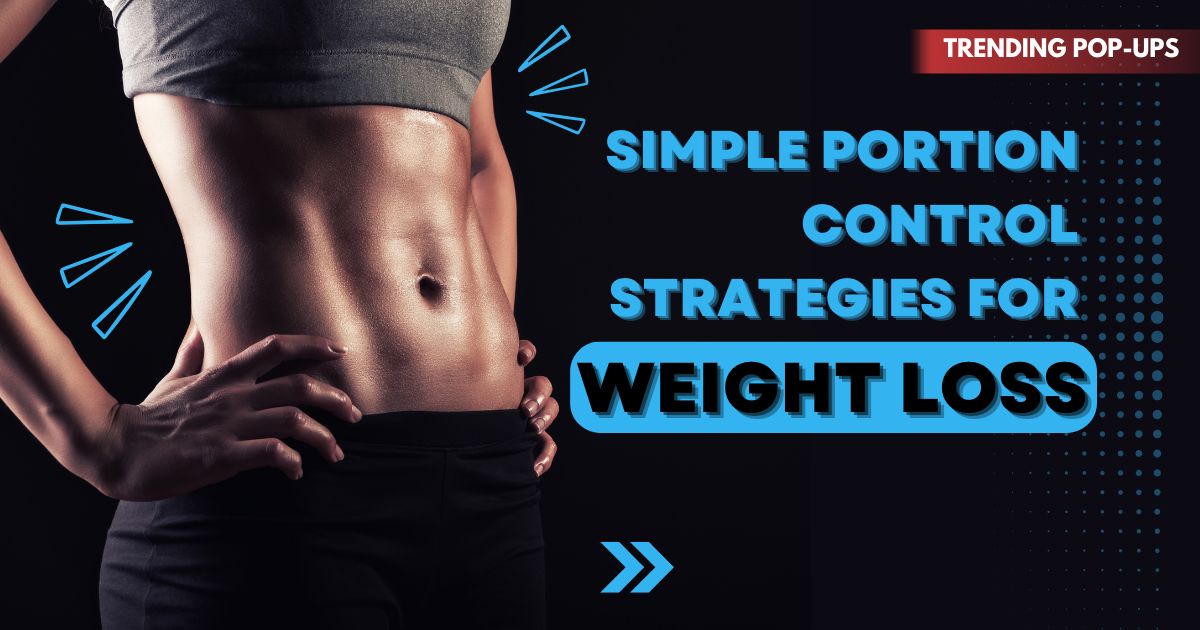Maintaining a healthy weight doesn’t always mean strict dieting or eliminating favorite foods. One of the most effective and sustainable ways to lose weight is portion control—managing the amount of food you eat at each meal. By learning to recognize appropriate serving sizes and making mindful choices, you can enjoy your meals while gradually shedding pounds.
This guide provides simple, practical strategies for portion control that can be easily integrated into daily life.
Why Portion Control Matters
Overeating, even healthy foods, can lead to weight gain. Portion control helps by:
-
Reducing Calorie Intake: Prevents excess calories from contributing to fat storage.
-
Enhancing Digestion: Smaller meals are easier to digest and prevent bloating.
-
Promoting Mindful Eating: Encourages awareness of hunger and fullness cues.
-
Supporting Long-Term Weight Loss: Sustainable portion management helps maintain a healthy weight over time.
1. Use Smaller Plates and Bowls
A simple visual trick is to use smaller dinnerware. Studies show that people naturally eat less when their plates appear fuller.
Tip:
-
Replace large plates with 9–10 inch plates.
-
Serve meals on smaller bowls to control portions of rice, pasta, and soups.
2. Measure and Pre-Portion Food
Measuring portions can prevent accidental overeating.
Strategies:
-
Use a kitchen scale or measuring cups for accurate servings.
-
Pre-portion snacks into small containers or bags instead of eating from large packages.
3. Fill Half Your Plate with Vegetables
Vegetables are nutrient-dense, low-calorie, and high in fiber. Filling 50% of your plate with vegetables reduces the space for calorie-dense foods.
Tip: Steam, roast, or sauté vegetables to make them more flavorful without adding excess calories.
4. Mindful Eating Practices
Being mindful during meals can prevent overeating.
Strategies:
-
Eat slowly and chew thoroughly.
-
Avoid distractions like TV or smartphones.
-
Pay attention to hunger and fullness cues—stop eating when satisfied, not stuffed.
5. Control Carbohydrate and Protein Portions
Balance is key for weight management.
Guidelines:
-
Carbs: ¼ of the plate, preferably whole grains like brown rice, quinoa, or oats.
-
Protein: ¼ of the plate, lean options like chicken, fish, tofu, or beans.
-
Add healthy fats in moderation, such as olive oil, nuts, or avocado.
6. Use Visual Cues for Portion Sizes
If you don’t have a scale, use everyday objects as reference points:
-
Protein portion ≈ size of a deck of cards
-
Carbs ≈ size of a fist
-
Fat (oil or butter) ≈ size of a thumb
-
Snacks ≈ handful size
These visual cues make portion control easier without complicated measurements.
7. Plan and Prep Meals Ahead
Meal planning helps avoid impulsive overeating.
Tips:
-
Prepare balanced meals with appropriate portions in advance.
-
Store meals in portion-sized containers for grab-and-go convenience.
-
Avoid leaving large serving dishes on the table.
8. Be Careful with Liquid Calories
Drinks like soda, juices, and specialty coffees can add hidden calories.
Strategies:
-
Choose water, herbal teas, or black coffee.
-
Limit sugary beverages or pre-portion them in small glasses.
9. Practice the “Half-Plate Rule”
An easy rule for every meal:
-
½ plate vegetables
-
¼ plate lean protein
-
¼ plate whole grains or complex carbs
This method balances nutrients and naturally reduces calorie intake.
10. Listen to Your Body
Even with controlled portions, it’s important to respond to your body’s hunger and satiety signals.
Tips:
-
Eat when hungry, not out of boredom or stress.
-
Stop eating when comfortably full.
-
Avoid guilt; portion control is a long-term habit, not a temporary restriction.
Conclusion
Simple portion control strategies can make a significant difference in weight loss and long-term health. By using smaller plates, pre-portioning food, filling half your plate with vegetables, and practicing mindful eating, you can manage calorie intake without feeling deprived. Combining these habits with regular physical activity, hydration, and balanced nutrition helps maintain a healthy weight, improve digestion, and promote overall wellness. Small, consistent changes in portion size can lead to lasting results and a healthier lifestyle.
Also Read : Meal Planning for Busy People: Healthy Eating Made Simple
FAQs
Q1. How quickly can I see results with portion control?
Results vary, but consistent portion management combined with a balanced diet and exercise can lead to noticeable weight loss within a few weeks.
Q2. Can portion control help without changing food choices?
Yes, managing portions can reduce calorie intake and aid weight loss even if your diet remains the same.
Q3. Is it okay to use snacks in portion control?
Absolutely. Pre-portioning snacks into small containers helps prevent overeating while still allowing treats.
Q4. Can I eat out and still control portions?
Yes. Consider sharing meals, ordering smaller portions, or packing half to-go before starting your meal.
Q5. Does drinking water help with portion control?
Yes, drinking a glass of water before meals can reduce hunger and prevent overeating.



